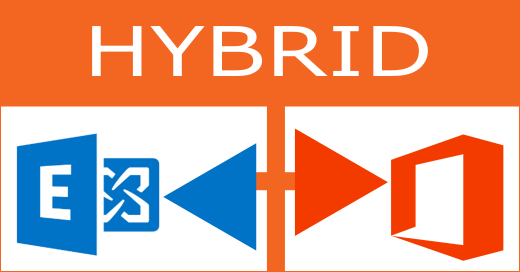Migrating to O365 with a Minimal Hybrid Solution
 Whenever someone mentions the term hybrid, the Exchange administrator immediately thinks of a full-hybrid solution that connects an on-prem exchange environment with O365. However, while a full hybrid solution is the correct choice for companies that expect a long-term (or even permanent) coexistence between on-prem and O365, there is another option for those who are simply trying to get to the cloud instead.
Whenever someone mentions the term hybrid, the Exchange administrator immediately thinks of a full-hybrid solution that connects an on-prem exchange environment with O365. However, while a full hybrid solution is the correct choice for companies that expect a long-term (or even permanent) coexistence between on-prem and O365, there is another option for those who are simply trying to get to the cloud instead.
Enter the Minimal Hybrid solution.
Also known as an express migration, the minimal hybrid option in the Exchange Hybrid Configuration Wizard is a great choice if you simply need to migrate the contents of your user mailboxes to Office 365 over a course of a few days or weeks. A Minimal Hybrid solution is simpler to setup and generally provides an easier path to O365 and allows the company to leverage the following benefits:
- Outlook Profiles don’t need to be recreated once the migration is completed
- Mailbox moves to O365 are largely transparent to users
- Mail flow is not affected during migrations
- User accounts and passwords are synced so no need to remember two sets of credentials
While there is a slew of benefits to using a minimal hybrid solution to get to O365, there are a few drawbacks as well:
- No Cross-premises Free/Busy sharing
- No TLS secured mail flow between on-premises and Exchange Online
- No Cross-premises eDiscovery
- No Automatic Outlook on the web and ActiveSync redirection for migrated users
- No Automatic Retention for Archive Mailboxes
There are certainly a few potential show-stoppers in that list above. However, they are generally not much of an issue for a smaller to medium sized company that's interested in making a quick move to O365. As such, as long as you aren't expecting a long period of coexistence between on-prem and O365, the drawbacks are really no longer drawbacks - but you do need to properly plan to ensure you don't wind up in a situation where you are stuck with a minimal hybrid solution during a months-long period of coexistence.
Deploying a Minimal Hybrid Solution - Overview
Deploying a minimal hybrid solution is fairly straightforward.
Assuming you have a functioning (and healthy) on-prem exchange environment, you'd start by adding and verifying your email domains in O365. Once that's been completed, the hybrid config wizard is run to make the connection between the on-prem environment and O365.
With the connection between the two environments established, you would then deploy Azure AD Connect to sync your users to O65, where you would then license them. Once licensed, you would migrate their on-prem mailbox data to O365 using the familiar Exchange ECP (assuming Exchange 2013/2016 is your on-prem solutions).
After you've moved all of your mailboxes to O365, you'd flip your DNS so that autodiscover and MX records point to O365.
Is a Minimal Hybrid Solution Right for Me?
Practically speaking, you would only want to use a minimal hybrid solution to migrate emails if you are running exchange 2010 or greater on premises. Your plan to move your users to O365 should not span more than a few weeks at most (mostly due to the limitations on free/busy sharing and such). As far as directory synchronization goes, your plan should be to get away from it once the migration is complete. In other words, a minimal hybrid solution is really only intended to get you from an on-prem solution to a cloud-only solution. It's not meant for long-term coexistence nor is it intended for those looking to manage their users on-prem.
If you are a small to medium sized organization with fewer than a couple hundred mailboxes and you want to get to O365 with minimal effort and minimal headache, a minimal hybrid solution is probably your best bet. Just be aware that your user accounts in O365 will become “cloud-only” accounts when the migration is complete, meaning you will be managing them in O365, not in local AD.
In my experience, many (maybe most) smallish organizations are looking to do exactly this. However, as always, make sure you perform your due diligence before settling on a solution – especially if there is potential for a longer, drawn-out coexistence period. My recently-published course, entitled How to Perform an Express Migration from Exchange to O365, provides over TWO HOURS of step by step instruction on deploying a Minimal Hybrid solution and leveraging it to perform an Express Migration.
Have questions about the minimal hybrid solution? Contact Me.
About the author